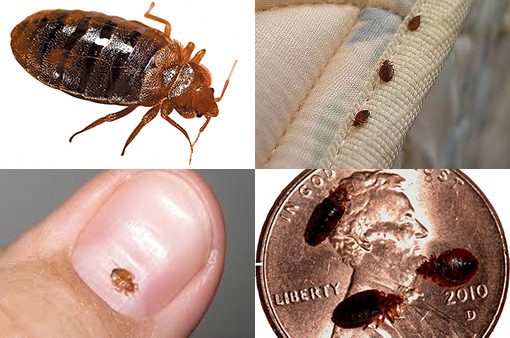Experienced DC Exterminator for Bed Bug Heat Treatment Near Me
Experienced DC Exterminator for Bed Bug Heat Treatment Near Me
Blog Article
Discovering the Science Behind Bed Bug Warm Treatments as a Sustainable Bug Management Strategy
In the realm of pest monitoring, the mission for sustainable and effective solutions stays a constant search. One such method that has actually acquired traction recently is using warm treatments to fight bed insect infestations. By utilizing the science behind thermal fatality points for these consistent insects, heat treatments offer an encouraging alternative to traditional chemical-based techniques. The ins and outs of exactly how warmth properly gets rid of bed bugs and the wider ramifications for lasting bug monitoring techniques make this a subject worth checking out better.
Bed Pest Heat Therapy Refine

Thermal Fatality Factor for Bed Bugs
Subjecting bed pests to elevated temperatures past their thermal resistance range is vital for attaining effective removal in heat therapy processes. The thermal fatality factor for bed pests describes the temperature at which these parasites can not endure. Research study shows that bed pests begin to die when revealed to temperatures over 113 ° F(45 ° C) for a continual duration. As the temperature increases, so does the death rate of bed bugs. At around 118 ° F(48 ° C ), bed pests start to die rapidly, with a death rate of nearly 99% within mins of direct exposure. This shows the level of sensitivity of bed pests to heats and highlights the effectiveness of warm treatments in removing invasions. By reaching and maintaining temperatures over the thermal fatality factor for bed insects, pest administration experts can guarantee extensive removal of bed insect populaces, consisting of hard-to-reach areas where chemical treatments might be much less effective. Recognizing the thermal death factor for bed bugs is important for executing successful warmth therapy methods and achieving lasting bug administration results.
Advantages of Warm Treatments
Having established the critical thermal fatality point for bed pests, it is critical to currently explore the considerable advantages that warm therapies supply in properly eradicating these resilient parasites. Heat treatments present numerous crucial benefits when contrasted to typical chemical approaches. One of the primary benefits is that warm can pass through deep right into holes and fractures where bed insects hide, making sure that also the most hard-to-reach areas are heated to dangerous temperature levels. This extensive approach not only eliminates live bugs yet additionally targets bed bug eggs, stopping future infestations.
Moreover, warm therapies are non-toxic and eco-friendly, making them a sustainable bug administration method. Unlike chemical pesticides, heat treatments do not leave dangerous residues that can present risks to human wellness or the setting. This facet is especially vital in delicate atmospheres such as hospitals, schools, and residential areas where chemical usage might not be desirable.
In addition, heat therapies have a high success rate in removing bed pest this link invasions in a solitary treatment, decreasing the demand for several visits and minimizing disturbance to occupants. This performance not only saves time and cash but additionally supplies assurance to those taking care of bed insect problems.
Efficiency of Heat Therapy

Research researches have actually continually demonstrated the effectiveness of warmth treatments in accomplishing a high rate of bed pest mortality. Properly carried out warmth treatments can reach all the cracks and gaps where bed insects may be nurturing, guaranteeing a thorough method to elimination. In addition, warmth therapies have the included advantage of killing bed bug eggs, which are frequently resistant to standard chemical therapies. In general, the performance of warmth treatments in removing bed insect invasions makes them a trusted and sustainable bug monitoring approach.
Lasting Parasite Monitoring Conveniences
Carrying out lasting parasite monitoring techniques provides lasting advantages for both the atmosphere and public health. By utilizing techniques such as warmth therapies for pest control, we can minimize the dependence on dangerous chemical pesticides that can have damaging impacts on image source environments and human health - DC exterminator. Lasting bug monitoring strategies assist in preserving biodiversity by targeting certain bugs without harming non-target microorganisms, consequently keeping a balanced community
Additionally, sustainable insect management practices add to the overall health and well-being of the general public. By decreasing direct exposure to poisonous chemicals used in traditional pest control techniques, heat therapies supply a more secure alternative for bug monitoring in property, business, and public rooms. This decrease in chemical usage also helps in preventing pesticide residues from polluting water, air, and dirt, guarding environmental high quality.
Final Thought
To conclude, bed insect warm therapies have actually been shown to be a effective and lasting parasite administration technique. The thermal fatality point for bed pests makes them vulnerable to heat treatments, which have various advantages over conventional chemical therapies. The effectiveness of warmth treatments in getting rid of bed insect infestations while minimizing ecological impact highlights the possibility of this method as a lasting option for insect control.
The bed insect warm treatment process includes raising the temperature within plagued locations to a degree that effectively gets rid of bed pests and their eggs. By reaching and keeping temperature levels above the thermal death point for bed pests, pest monitoring specialists can ensure detailed elimination of bed insect populations, including hard-to-reach locations where chemical therapies may be much less reliable. One of the primary benefits is that heat can permeate deep right into gaps and cracks where bed bugs hide, ensuring that also the most hard-to-reach locations are warmed to lethal temperatures. Unlike chemical therapies that may leave behind immune populaces, warm treatments offer a non-toxic and eco friendly remedy that can penetrate deep right into furniture, wall imp source surfaces, and various other hard-to-reach locations where bed bugs hide.
The thermal fatality point for bed insects makes them at risk to heat treatments, which have various benefits over typical chemical therapies.
Report this page